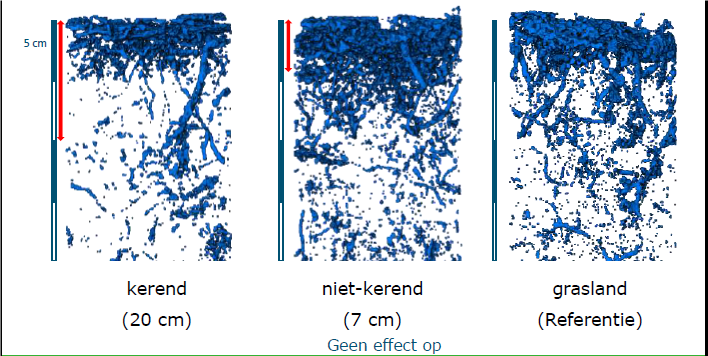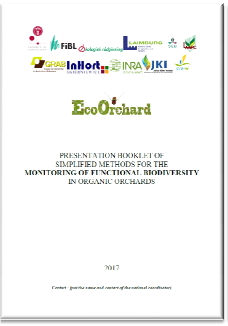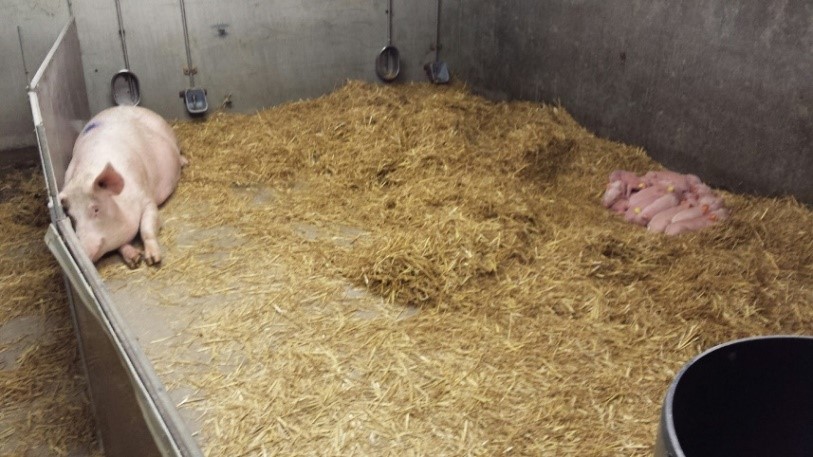“Bio-beurs” offers Core Organic a podium
National events for the organic sector, like the Bio-beurs in the Netherlands, provide researchers with an opportunity to talk about Core Organic projects.

On 17 and 18 January 2018, Bio-beurs, the Dutch organic trade fair, was held at the IJsselhallen in Zwolle. The fair offered a meeting place for organic farmers, producers and traders and for anyone professionally interested in the organic sector.
The fair also offers a platform for knowledge dissemination, with over 80 sessions in its workshop program Bionext, the umbrella organisation for the Dutch organic sector, organises the event, which attracts around 10,000 people annually. Queen Maxima of the Netherlands was one of them.
CORE organic workshops
The Dutch ministry of Agriculture, Nature and Food Quality and Bionext invited researchers to present the COPlus and COFund projects at the fair. As a result, eight projects were presented in a lively setting for a mixed public. Eric Regouin from the ministry kicked the event off by expressing the importance of the CORE Organic network: “As many problems know no borders, European cooperation for organic food and farming research is important.”
Fertilcrop: soil assessment
A meta-analysis of different ploughing regimes, presented by Ron de Goede from Wageningen University (WUR), showcased reduced tillage of less than 25 cm. Reduced tillage results in slightly lower yield, but more carbon storage and good weed control. Ron’s task in the Fertilcrop project was the assessment of earthworm abundance and their contribution to macropore structure. His 3D scans allowed their contribution to the distribution of macropores in the different soil layers to be quantified. Farmers can study soil structure by visual soil assessment methods. How this can be done, is explained in the following movie: http://www.fertilcrop.net/fc-home-news/fc-newsitem/article/1905.html.

3D scans of macropores. Credit: Ron de Goede, WUR
Ecoorchard: Functional agribiodiversity
Researchers in the Ecoorchard project on organic orchards collected a list with functional agribiodiversity (FAB) monitoring methods, which Annette Herz from the Julius Kuhn Institute presented. She also introduced the 40 listeners to the “Ebionetwork”, a website where FAB measures in Europe are collected. The website (https://ebionetwork.julius-kuehn.de) will remain active after the project ends.

Simplified methods for the monitoring of functional biodiversity in organic orchards http://orgprints.org/30812/1/EcoOrchard_methods_presentation_booklet_2017.pdf
Soilveg: Testing the roller crimper
Finally, the Soilveg project was presented. The project tests a technique which uses a roller crimper to flatten green manure and create a decomposing mulch layer where vegetables can be planted. This technique was tested with many different green manure-vegetable combinations. Lieven Delanote, from Inagro in Belgium, tested the combination of rye as a green manure with cabbage as a vegetable crop. He gave a lively account of the many barriers that had to be overcome to fine tune the system.
2-Org-Cows: Breeding for animal welfare
The session on plant production systems was followed dairy production. Wytze Nauta from the Dutch Foundation for Organic Animal Breeding presented the 2-Org Cows project. In short, different dual purpose breeds may share traits that make them better suited to organic and grazing conditions. Knowing these traits allows farmers to select the right breed of cows for their farm and farm management. To collect the ‘novel’ traits, a sensor was placed in the cow’s ear. “There is an enormous amount of data collected, and we are investigating the value”, says Wytze.
Projects that will start soon
In addition to the four nearly finished COPlus projects, four projects that will start in 2018 were presented. Ariette Matser from WUR presented ProOrg, where a Code of Practise for organic processing technologies will be developed. Examples of some techniques she suggested, such as high pressure pasteurizing, already gave rise to a discussion with the audience about the suitability of that technique with organic principles, demonstrating the need for the project.
Cynthia Verwer from the Louis Bolk Institute introduced Graisy-Daisy, a project on animal welfare in dairy systems.
Hans Spoolder, from WUR, showed that in Power, researchers from the Netherlands will investigate how to support the natural behaviour of pigs to improve hygiene and decrease piglet mortality.
Finally, Monique Bestman, from the Louis Bolk Institute, presented the Freebirds project. This project builds upon findings from the Core Organic project Healthy Hens. As a part of the project, researchers look at why hens that use the outdoor area well seem to be less troubled by parasitic worms.

The new project Power will investigate how to improve hygiene and decrease piglet mortality. Credit: Wageningen Lifestock Research.